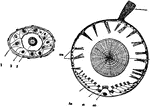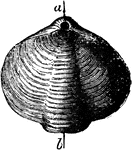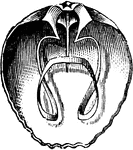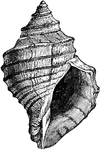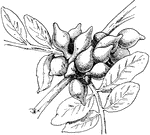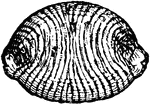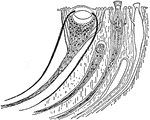
Iphigenia Brasiliensis - Sinupalliate Right Valve
"Having a sinuous pallial margin and consequent sinuous impression on the shell along the line of attachment…
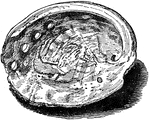
Abalone
"A general name on the Pacific coast of the United States for marine shells of the family Haliotidæ…

Aetheria semilunata
"A genus of bivalve mollusks, of the family Uniondæ, found in the rivers of Africa and Madagascar."-Whitney,…

Ammonite
"Ammonite is the name for a large genus of fossil chambered shells."—(Charles Leonard-Stuart,…

Ammonite
"Ammonite is the name for a large genus of fossil chambered shells."—(Charles Leonard-Stuart,…
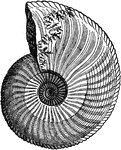
Ammonite
Ammonite, side view. Where the shell has been partly worn away near the aperture, the complex "suture…
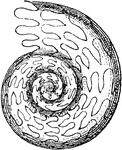
Ammonoid
"Goniatites henslowi. GONIOTITES. A genus of fossil ammonites, giving name to the family Goniatitidae,…
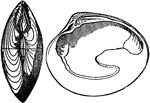
Bivalve
"Bivalves are those mollusks whose coverings consist of two concave shelly plates or valves united by…

Bivalve Mollusk
"Shell of a Bivalve Mollusk, inner surface. ad.a., depression showing the attachment of the anterior…

Cephalopod
The cephalopods are the mollusk class Cephalopoda characterized by bilateral body symmetry, a prominent…
Cephalopod
A simple straight-shelled cephalopod. Where the shell has been removed, the straight sutures are shown.

Cephalopoda
"Cephalopoda is a class of mollusks, the highest in organization of the division of the animal kingdom.…

Chiton (Dorsal)
A dorsal view of a chiton, showing the eight shell plates. Chitons are small to large, primitive marine…

Chiton (Ventral)
A ventral view of a chiton, showing p, foot; o, mouth; kr, oval fringe; and br, the numerous ctenidia.…

Chiton with Shell Removed
An illustration of the dorsal view of a chiton with the shell removed. Showing b, buccal mass; ov, ovary;…

Burrowing Clam
"Mya arenaria, a burrowing clam. The siphon is represented as fully extended. This is quickly retracted…
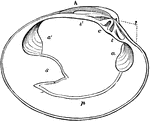
Clamshell
"a, a', impressions of the muscles; p, pallial line; s, bend occupied by the siphon; h, hinge; c, t,…

Scorpion Conch
The scorpion shell (Pteroceras lambis) is a large sea snail in the Strombidae family of conchs.
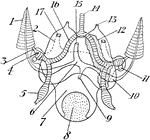
Cuttlefish Circulatory and Excretory Systems
"Diagram of circulatory and excretory systems in a Decapod-like Sepia. 1, Gill; 2, renal sac; 3, afferent…

Cuttlefish Structure
"Diagram of the structure of Sepia. a., Eight short arms around mouth; l.a., one of the two long arms;…

Common Cuttlefish
The Common Cuttlefish (Sepia officinalis) is a mollusc in the Sepiidae family of cephalopods.

Dissection
"Dissection of snail. T., Short horn; TT., long horn with eye; N., cerebral ganglia; S.G., salivary…

Unio elongata
"The U. elongata is found in Great Britain, and formerly produced numerous pearly; these were…

Eye of Gasteropod
Section through the cup-shaped eye of a gastropod. Labels: e, epithelium covering body; cv, vitreous…

Fu'sus
Fu'sus is a genus of gastropods, which are allied to the British whelk and American conch, and which…
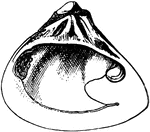
Right Valve of Galatea Bivalve
Galatea reclusa is a species of bivalve mollusk in the Donacidae family of bean clams (wedge shells).

Dorsal View of Gastrochaena
"Dorsal View of Gastrochaena. The ventral view shows the dried mantle with pedal perforation." -Whitney,…

Lateral View of Gastrochaena
"Lateral View of Gastrochaena. The ventral view shows the dried mantle with pedal perforation." -Whitney,…

Ventral View of Gastrochaena
"Ventral View of Gastrochaena. The ventral view shows the dried mantle with pedal perforation." -Whitney,…





